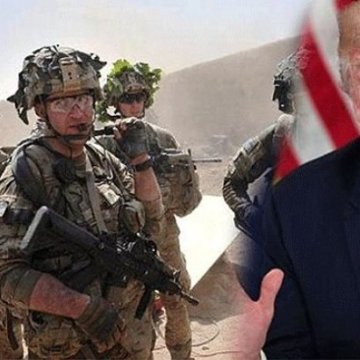- About
- Topics
- Picks
- Audio
- Story
- In-Depth
- Opinion
- News
- Donate
- Signup for our newsletterOur Editors' Best Picks.Send
Read, Debate: Engage.
| located: | Afghanistan, USA |
|---|---|
| editor: | Shadi Khan Saif |
All warring sides in Afghanistan seem to have adopted the dreadful path of death and destruction following the announcement of the new US war strategy for the conflict-riddled country.
With no encouraging signs of any headway towards resuming the stalled peace process, the sudden surge in gruesome deadly incidents across the country has sparked fears about the overall prospects of ending the war that has now entered its 17th year.
Responding to an array of mounting air and drone strikes by the US and Afghan forces, this week the Taliban carried out multiple suicide car bombings in at least three different provinces, killing more than 100 security personnel, and civilians who were going about their everyday life activities.
On Wednesday morning, multiple suicide car bombings rocked Gardez city, capital of the southeastern Paktia province, at a distance of less than one hundred miles from the heavily guarded Afghan capital Kabul. More than 50 lives were lost there, including the police chief for the province, and a number of young Paktia University students and many common citizens queuing-up for identity cards, passports and other documents near the site of the attack.
The Ghazni province’s Andar district and Kandahar’s Maiwand district saw similar assaults resulting in the loss of over 70 lives in the blink of an eye.
Now, looking at what the other parties to the conflict are doing would picture a very clear image of the situation on the ground. Since the announcement of the new US war strategy for Afghanistan in August, the US Forces in Afghanistan (USFOR – A) conducted at least 751 air strikes in the month of September alone, according to a US Air Forces Central Command report.
On its part, the Afghan ministries of defence and interior are issuing statements on the killing of tens of suspected militants on a daily basis.
Where is all of this death and destruction leading us then? The US, arguably the major player in this scenario has already pledged to send in more troops, and is also pushing its Nato allies to follow suit. On the other side, the Taliban and other militant groups do not seem to be having a manpower supply issue after all, both due to the prevailing fundamental ideology in the region and some pull factors created by state actors.
There does seem to be a broader consensus, at least among some wise quarters, that the raging war in Afghanistan is not the answer to the ongoing problem in the country. One wonders then why there aren't any tangible moves on the ground to at least pave way for a political settlement instead of all this warmongering.
